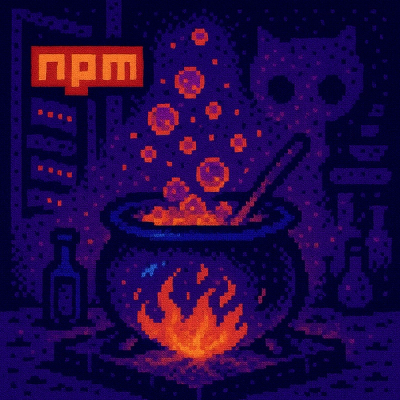
Security News
The Changelog Podcast: Practical Steps to Stay Safe on npm
Learn the essential steps every developer should take to stay secure on npm and reduce exposure to supply chain attacks.
A Python port of the daggen <https://github.com/frs69wq/daggen>_ tool proposed by Suter & Hunold.
This library generates random, synthetic task graphs for simulation. You can easily convert the
generated task graphs into directed acyclic graphs (DAGs) in tools such as NetworkX <https://networkx.org>_ or
igraph <https://python.igraph.org>_, or export them to files. The library helps evaluate scheduling
algorithms using various application configurations.
Here is an example of how to generate a DAG of 15 tasks, accepting the default parameters, and import it into igraph:
.. code-block:: python
import daggen as dg import igraph as ig
dag = dg.DAG(seed=42, num_tasks=15) tasks, edges = dag.task_n_edge_dicts() igraph_dag = ig.Graph.DictList(vertices=tasks, edges=edges, directed=True)
You can alternatively convert the task graph into a NetworkX' DiGraph:
.. code-block:: python
import daggen as dg import networkx as nx
dag = dag.DAG(seed=46, num_tasks=15) tasks, edges = dag.task_n_edge_tuples() net_dag = nx.DiGraph() net_dag.add_nodes_from(tasks) net_dag.add_edges_from(edges)
Each generated task has two attributes:
Each edge represents a communication from a parent task to a child task and has a data attribute representing the amount of data transferred from parent to child.
You can configure the characteristics of the generated DAGs by parametrizing the DAG() function.
Following the C implementation, one can set the following parameters:
seed: used to seed the random number generator and ensure reproducibility.
num_tasks: Number of computation nodes (application tasks) in the DAG.
min_data: Minimum amount of data in bytes a task processes.
max_data: Maximum amount of data in bytes a task processes.
min_alpha: Minimum value for the extra parameter (e.g., Amdahl's law parameter).
max_alpha: Minimum value for the extra parameter.
fat: Width of the DAG, the maximum number of tasks executed concurrently. A small value results in a thin DAG.
(e.g., chain) with low task parallelism, while a large value creates a fat DAG (e.g., fork-join).
with a high degree of parallelism.
density: Determines the dependencies between tasks of two consecutive DAG levels.
regular: Regularity of the task distribution between the different levels of the DAG.
ccr: Communication to computation ratio. It encodes the complexity of the computation of a task
depending on the size n of the dataset it processes. The encoding is as follows:
a * n (a is a constant picked randomly between 26 and 29).a * n log nn3/2jump_size: Maximum number of levels spanned by inter-task communications, which enables DAGs
with execution paths of multiple lengths.
A couple examples are available on this Colab notebook:
.. image:: https://colab.research.google.com/assets/colab-badge.svg :target: https://colab.research.google.com/github/assuncaomarcos/daggen/blob/main/notebooks/daggen_examples.ipynb :alt: Open in Colab
FAQs
A Python Wrapper for the daggen tool proposed by Frederic Suter
We found that daggen demonstrated a healthy version release cadence and project activity because the last version was released less than a year ago. It has 1 open source maintainer collaborating on the project.
Did you know?

Socket for GitHub automatically highlights issues in each pull request and monitors the health of all your open source dependencies. Discover the contents of your packages and block harmful activity before you install or update your dependencies.

Security News
Learn the essential steps every developer should take to stay secure on npm and reduce exposure to supply chain attacks.

Security News
Experts push back on new claims about AI-driven ransomware, warning that hype and sponsored research are distorting how the threat is understood.

Security News
Ruby's creator Matz assumes control of RubyGems and Bundler repositories while former maintainers agree to step back and transfer all rights to end the dispute.